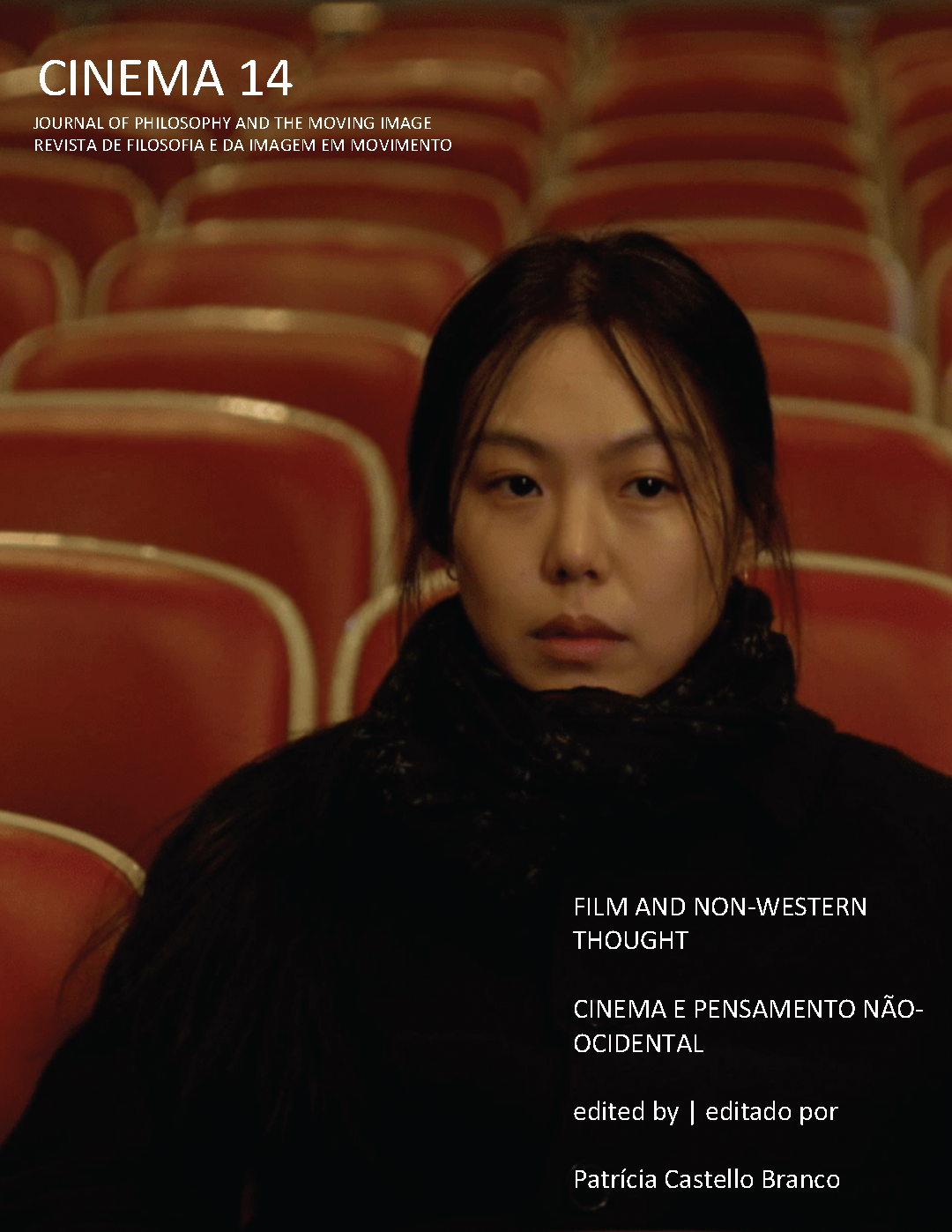Living Time: Re-evaluating Cinematic Empathy Through Li Zehou
DOI:
https://doi.org/10.34619/mthd-lu2aPalavras-chave:
Asian cinema, Confucianism, Emotion, Sensation, SoundResumo
Empathy is commonly conceived as “understanding” and more particularly to cinema as a representative affectivity, a body-relation that comes through the screen to viewer. This essay considers a concept of empathy that elevates the sensory in any such relation, a feeling within the film’s own immanent relations. This “sensory empathy” pulls the emphasis away from classic Greek necessities of distance and later Enlightenment concepts of perspective, which depend on a cognitive understanding. Instead, it invites us to consider a more Asian gathering of a living time. This will be explored through Chinese scholar Li Zehou, who marks an aesthetic differentiation between Kantian and Confucian time. In the former is a general, objective and spatialized time, while in the latter is found an entanglement of sensuous emotions. Key to this is Li’s writing on “the fusion of feeling and scene” (qing jing jiao rong) taken from Confucian aesthetics. This emphasizes a decoupling from signs, symbols, ideologies and mimetic representations of image and subject to explore how sensuous emotions of nostalgia, yearning, imagination, and human existence become entangled. This essay picks up from these concepts to distinguish Greek mimesis from Chinese expression and spirit to propose a cinema of sensory empathy.
Directors under study include Abbas Kiarostami, Salomé Lamas, Chloe Zhao, and in particular, Terrence Malick and Apichatpong Weerasethakul. Exploring Li’s concepts through these works requires an emphasis on the audible and temporal aspects of cinema more than the visual. Through “audible expressions,” time unfolds as a coexistence of durations, weaving the present and the past as a process of thought and memory vital to a sensory empathy. Through audible coexistence, a tether forms between subjects within and the audioviewer who feels rather than gazes or “reads” what is underway. Li’s ideas are the focus, and his work is supported through readings by recent Li scholars. His work is also situated through writings by Bachelard, Baggini, Bergson, Deleuze, Yuhui Jiang, Cecile Chu-chin Sun, and others. The aim of this essay is to provide a non-Western way into the concept of cinematic empathy outside familiar terms such as “sound design,” “representation,” “analysis” and “mise-en-scène,” and to introduce scholars to the work of Li, who has been ignored in cinema studies.
Downloads
Publicado
Como Citar
Edição
Secção
Licença
Direitos de Autor (c) 2022 Cinema: Revista de Filosofia e da Imagem em Movimento

Este trabalho encontra-se publicado com a Licença Internacional Creative Commons Atribuição 4.0.




